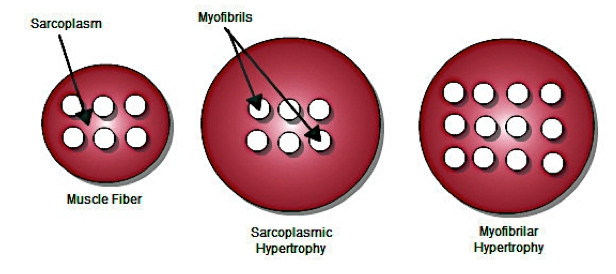Strongman Analytics
Dr. Mark Clevenger
The title of the sport of Strongman can be deceiving, it implies that only absolute strength is tested and that the statically strongest person always wins. This cannot be further from the truth. A Strongman contest is a series of 5 different events that can test an athletes absolute strength, repetition strength, speed strength, conditioning, athleticism, and equipment mastery. Too often athletes in the sport tend to focus on absolute strength and forget to think about these other aspects of events that are worth just as much, if not more points on your score by the end of the contest. I want to walk you through an analytics process of viewing the sport so you can construct your training to maximize your performance on any given event at any competition.
Absolute Strength
In almost every contest you will have a deadlift and overhead press variation event. This is automatically 2 out of 5 events that you are going to be tested on, so your absolute strength for the most carry over to these events should be in the deadlift, log press, and axle press. Where people get too caught up here is thinking your 1 rep max in these lifts carries over to more than just these lifts. A big deadlift does not necessarily mean a fast yoke run, or a fast truck pull, and a big log press does not necessarily mean a good circus dumbbell performance. They do help, but they are not the sole performance indicators to these other lifts. Being statically strong in these two lifts is important but they only directly carry over to these two event variations.
Knowing how important these two lifts are for 2 out of 5 contested events, the bulk of your offseason training should consist of building strength in these lifts, while your contest prep should be focused on refining your technique for these lifts. Take a look at where and why you fail at these lifts and let that direct your accessory work. Pick out 1 or 2 aspects of these lifts that you struggle at (hamstring strength, bar path, stabilization, ect…) and train those, because getting better at those will make you better at this main lift. Then go ahead and fill the rest of your training time with lower impact exercises that will help keep your joints and body healthy in the long term (*cough *cough cardio…. *cough *cough generalized physical preparedness).
After you’ve picked a contest with some variation of deadlift and overhead press, the next question you should be wondering is when to start contest prep? This is highly variable from athlete to athlete. Some athletes need more event proficiency to maximize their current strength levels with an implement, and thus a little bit longer of a contest prep cycle. Other athletes may have greater event proficiency, or natural ability, and subsequently need less specific work requiring less prep time. With that being said, you should be honest with yourself and see where you fall on this spectrum to determine how long of a prep you need. In either case, anything longer than 12-16 weeks, including taper and deload, is too much. At that point any extra time should just be spent getting stronger and healthier during an off season training block.
Repetition Strength
Just because you’ve got a huge 1 rep max on a given event, doesn’t mean you’ve got the movement efficiency and repetition strength to crank out the number of reps it’s going to take to win an event on game day. Don’t get me wrong, it helps, but absolute strength is not the sole determining factor to winning a reps event.
The first step in analyzing a reps event is asking yourself how the weight compares to your current strength levels in that event? If it’s less than 80% of your 1 rep max then you know the bulk of your event training needs to be focused on the conditioning, repetition strength, and overall movement economy to maximize your performance. If the event is closer to 85-90% of your 1 rep max then there should be a solid mix of absolute strength work and some repetition work, to give yourself the best chance at reps on game day. Lastly, if an event falls in the 90+% range, or above your current max, then your contest prep focus needs to be on absolute strength.
Speed Strength, Conditioning, Athleticism
This is by far the most underrated aspect of Strongman. In a typical Strongman competition 3 of the events will hinge on these things. Yes, being statically strong or having great repetition strength has scored you well in two events, but if you move like molasses, do the stanky leg while carrying weight, and get winded after 20s of work, you won’t place very high in these events. The common fault I see athletes make with regards to these events is the belief that if they get statically stronger it will magically give them work capacity, make them fast, and make them explosive. It has to be understood that these qualities, while connected in some fashions to absolute and repetition strength, are stand alone qualities and have to be trained independently.
If there’s a conditioning event (max distance carry, ect..) and you can barely move competition weight because it’s so heavy, then you probably don’t need the bulk of your event training to be lighter weight for longer distances, this is where absolute strength in the event will give you the best performance. On the flip side if the competition weight is manageable relative to your abilities, then you probably need to be hammering your conditioning and efficiency for the event (recognize a theme yet?). If this is where you find yourself, understanding the mark to beat is an important training and programming tool. This is where you guesstimate where the top performers will score and train for that mark to ensure you maximize your points earned for that event. Don’t miss out on the podium because you didn’t know what mark to train for and subsequently under perform an event that costs you a lot of points.
If you find yourself with a distance for time event (yoke, farmers, ect…) this is not about how strong you are, but how fast you are. If you can’t move fast with weight you have to ask yourself why? Is it a bracing issue? Dynamic unilateral stability issue? Hip strength? Understand why, and train the heck out of that so you can get better at these events without training them all the time. Constantly training events in this sport will wear your body down, especially moving events. So work on finding ways to get better at these events with traditional strength training methods to not only save the wear and tear of these events but this will also give you a greater carry over to other events as well.
I can’t count how many times I’ve seen an athlete in a medley carry something heavy impressively fast, then as they transitioned back to another implement 50’ away would shuffle or light jog, then again be incredibly fast carrying another heavy piece of equipment. Then you see them followed up by another athlete, not as fast carrying objects, but was an absolute blur sprinting between the implements, making up that time they lost on the carry and actually ending up beating a ‘stronger’ competitor because of it. Time is time, it’s counting from the whistle to the finish, everything you do in that span of time matters. Being an athlete and making your body fast not only with the parts where you carry weight, but the transitions between them as well, will ensure that the best time you are physically capable of is achieved. The takeaway here is, be as fast as you can at all aspects of an event, not just certain parts of it.
Equipment Mastery
The argument I hear too often in Strongman is that you don’t need the equipment, you just need to be strong. Although competitors can take the equipment specifications for contest training too far (what are the exact dimensions of the farmers’ handles? What is the exact height of the pull for the car deadlift? Ect…), the idea that you don’t need to be proficient with a piece of equipment is absurd. That’s like telling an Olympic discus thrower that they don’t need practice with the discus, they just need to be powerful. Yes, it helps, but there is technique to every different event we do for our body types, and knowing the details of how to make an event work for you is a significant part of contest preparation.
Lastly, understanding the gear allowed for a contest and how your body is best aligned for a movement pattern is hugely important. Did they say no deadlift suits in the event explanation? If it will help, throw on the suit. Did they say no deadlift suit but didn’t mention briefs? If it will help, throw on your briefs. Are you allowed to wear grip shirts or double soft/hard belts for the overhead? If so and it helps, wear it. Are you a shorter athlete who can get a wide stance and knees under the bar on an elevated deadlift? I guarantee you can pull more that way than a traditional stance with the bar under your knee. In the end, use any equipment or technique that is allowed that will help you maximize your strengths or leverages in every event for the sake of gaining the most points on game day.
The Point
The point I’m trying to make with all of this, analyze every detail of every event, in every contest you sign up for. Compare this to your strengths and your weaknesses, and let that dictate your training. Stop getting caught up in having a big deadlift and big log press (yes these are important but not everything) and neglect the aspects of other events that equally determine your final points standings at a show. Far more often in this sport we see a better all around athlete beat out a much stronger athlete because of how they prepared their body for each event. Remember, in the end it is called Strongman, but there are many different types of strength and none so more important than another.




